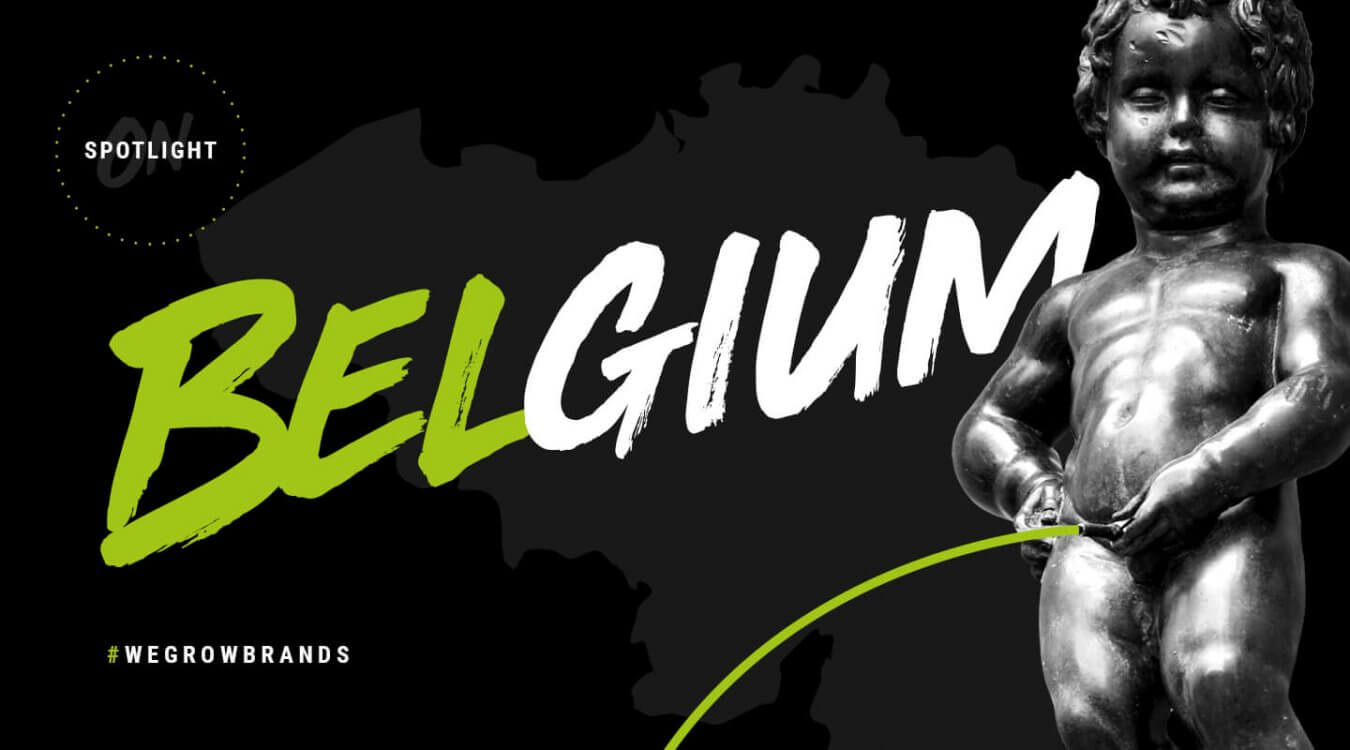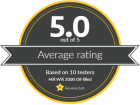Country Focus: Belgium
Unexpected things from Belgium, and what CE retailers can learn from the EU’s epicentre
With this mini-series putting markets Aqipa operates in the spotlight, we want to help new brands assess the attractiveness of these markets and inspire retailers to learn from their peers in other countries. After going all the way to Australia last time, we’ll be taking a look at the hotspot of European politics: Belgium.
The Economy
Before diving into the economy, here are three fun facts you probably didn’t know about Belgium:
- Belgium holds the world record for the longest period without a government, which lasted for 589 days in 2010-11.
- The communist manifesto by Karl Marx (who lived in Brussels from 1845-1847) and Friedrich Engels was written in Brussels. If you ever visit, you cannot miss Le Cygne, the restaurant in the Grand-Place where Marx wrote his famous document.
- In the 1970s, light beer was served as part of the school lunch. We all know Belgians love their beers so something like this shouldn’t surprise us, right? In traditional Belgian culture, it was acceptable for everyone, including children, to drink a light ‘table beer’ the way they drank their water and coffee.
Now, let’s talk business:
Belgium has a population of 11.5m, with the Brussels capital region being the largest city (1.2m). Situated between the UK, Germany and France, Europe’s three main economies, Belgium benefits from a strategic geographical position. Growth is driven by investment and household demand. However, the economic crisis caused by the Covid-19 pandemic has brutally curtailed growth, recording a negative GDP rate of 8.3% in 2020. According to the National Bank of Belgium, the coronavirus will lead to losses of about 100,000 jobs by autumn 2021. The unemployment rate, which was at an all-time low just a year ago, is projected to rise to more than 7 %. Inflation should come out at only 0.4 % in 2020, primarily because of the fall in energy prices. By the year 2023, it is expected to rise to 1.9 %. The government deficit is estimated at 10.6 % of GDP in 2020, after which it should decrease, although will likely remain at around 6 % of GDP.
Everything on the speed of the vaccine roll-out. According to Credit Insurance Firm Euler Hermes, reaching the EU Commission’s goal of vaccinating 70% of the adult population by summer 2021 would call for a vaccination pace that is roughly six times higher than currently observed.
Euler Hermes calculations show that EU countries are already five weeks behind schedule. As every week of prolonged sanitary restrictions reduces quarterly nominal EU GDP growth by -0.4pp, the current delay represents the equivalent of -2.0pp or close to EUR 90bn. For Belgium, this equals a cost of EUR 600 million per additional week of restrictions.
Unsurprisingly, following their almost complete closure during the first and second lockdown, shopping centres were severely affected by the COVID-19 crisis. According to Cushman & Wakefield, rent was heavily impacted by the successive closures. They fell by 15% on average for the premium segments (to €1,150/sq m/year for the best shopping centres), and by up to 30% for the more difficult locations.
The Ecosystem
The Belgian CE retail market is dominated by the following players:
- MediaMarkt
- Fnac Vandenborre
- Krefel
- Excellent (Buying Group)
- Selexion (Buying Group)
- Expert (Buying Group)
Revenue in the consumer electronics segment is projected to reach € 1,032m in 2021, according to statista. If you compare that to the similarly sized Swedish population, that is a whopping difference of ~ € 241 ARPU (average revenue per user) to € 502 ARPU in Sweden. This either makes the Swedish market remarkably strong or the Belgian market particularly weak.
According to latest figures on online retail released in August 2020, Belgians prefer to shop in a physical store. Still, online retail has been growing exponentially (mainly thanks to a larger selection and better prices) for many years and witnessed a strong boost during the first lockdown, especially for fashion and accessories, which saw a 20% growth. Food retailers, too, benefit from the rise of online retail.
50% of the consumers reportedly favour trusted brands with an omnichannel strategy, combining online sales and physical store. The overall share of ecommerce in 2020 was around 25% in the consumer electronics market, which is a far way off from Germany’s 31%, but 72% of Belgians already make online purchases, and this is where the aforementioned neighbouring countries are benefitting a lot with 30% of eCommerce sales being cross-border deals. The Belgian online market is dominated by foreign players sice Belgium was late to the e-commerce sector. As a result, a lot of tech-savy consumers went (and still are) shopping online abroad, especially Dutch onine shops. This also led to several big online merchants from the Netherelands opening .be-webshops that focus on attracting Belgian customers. It’s relatively hard for online retailers operating in Belgium to conquer the hearts of the population as the country is basically divided into Dutch-speaking Flanders and French-speaking Wallonia.
Belgian customers love to use the local payment method Bancard or the credit card when they need to pay for their online purchases. Research from BeCommerce in 2018 shows that Bancontact was used for 68 percent of all online purchases and for 30 percent of the money spent online.
Except for Vanden Borre, the top Belgian online players are made up of foreign brands that made their way into the Belgian market. If statistics are to be believed,, Apple is among the top 5 stores in consumer electronics in Belgium (Source: ecomerceDB.com)
- Coolblue (>€190m)
- MediaMarkt (>€94m)
- Vanden Borre (>€88m)
- Alternate.be (>€66m)
- Bol.com (>€ 48m)
- fnac.be (>€33m)
Vanden Borre is an IT audio, TV and telephone electronics wholesale company. They operate 63 stores throughout Belgium and offer their products through their website. They generated more than €400 million in turnover in 2019, less than 20% of which was made online. Originally owned by Darty, the company now forms part of the FNAC-Darty group after the merger of the two conglomerates.
Influencers
When it comes to the most famous and impactful influencers and magazines in Belgium, the following ones are noteworthy:
An influential special interest magazine is FWD Magazine, focusing exclusively on consumer electronics. When it comes to influencers, females are clearly dominating the market as shown by starngate.com
Anouk Matton is by far the largest tech influencer (@mattnworld) with a 60% male/40% female following across Belgium (followed by Germany, France, UAE and Italy) She loves posting about music, DJing, producers, celebrities and technology, and she has launched her own cosmetics online store.
Singer/songwriter Tinne Oltmans (@tinneoltmans) comes in on third place, with 134k followers.
Two more very influential players are young YouTube couple CEMI (Celine & Michiel) with their >550k YouTube channel and an increasing presence on tiktok.
Consumer Electronic Brands
The audio market in Belgium is dominated by the following audio players: JBL, Sony, Sonos, Bose and Sennheiser. Philips, Braun and Delonghi lead the home appliance market, while the top 3 office communication brands are Logitech, Jabra and Plantronics. The biggest name in action gear is GoPro.
Aqipa boasts an impressive brand portfolio across the categories of audio, home appliances and office equipment.
Audio
- Adidas Headphones
- Braun Audio
- Esoteric
- Integra
- JLab
- X by Kygo
- Onkyo
- Pioneer AV
- Pioneer DJ
- Pure
- TEAC
With aarke carbonators in the home accessories field and eMeet in office communication, Aqipa has a strong portfolio of brands that are challenging conventional market leaders.
AQIPA Insights
Belgium is quite peculiar in comparison to other (European) countries. Basically, there’s the Dutch-speaking part of Flanders and the French-speaking part of Wallonia, which lags behind eonomically. To make it even more complex, the federal state consists of three communities, three regions and four language areas. This means: different marketing campaigns and communication in a minimum of 2 languages, which in turn equates to higher marketing costs.
When it comes to margin expectations of retailers, they are in the range with other markets starting at 33-37% for audio and hifi products and 40% for headphones. Additional costs occur for reporting, marketing, payment terms and bonuses as well as returns.
Aqipa offers a full range of services in the country, from merchandising to sales to promotion and listings with all major accounts. Retailers enjoy working with Aqipa as they have one strong partner for a number of different brands, while for brands, Aqipa is a partner that doesn’t only have a local representative but also an international group in the background, specialized in helping brands grow and developing challenger brands in the premium consumer electronics sector.
If you have any questions, please reach out to local gear guru Erik Uytewaal.




